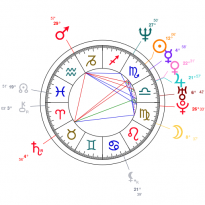 Sean Combs – Puff Daddy
Sean Combs – Puff Daddy
Biography
Sean John Combs (born November 4, 1969) is an American record producer, CEO, clothing designer, actor, and rapper.
Foxy 105 (Columbus, Georgia) reported in January 2008 that his stage name and nickname were changed to Sean John, which has been denied by Combs. He has been previously known as Puff Daddy, later as P. Diddy (Puff and Puffy being often used as a nickname, but never as recording names), his nickname and stage name were then changed to Diddy (adopted in August 2005). He is still called P. Diddy in New Zealand and the United Kingdom, the latter after a legal battle with another artist, Richard “Diddy” Dearlove.
His business interests include Bad Boy Records, the clothing lines Sean John and Sean by Sean Combs, a movie production company, and two restaurants. He has taken the roles of recording executive, back up singer, performer, producer of MTV’s Making the Band, writer, arranger, clothing designer, and Broadway actor. Combs is the second richest hip-hop mogul, having a net worth estimated at US $358 million…
Source : Wikipedia
Download now Daily Horoscope Expert and find out what the experts say:
 The dominant planets of Sean Combs
The dominant planets of Sean Combs
When interpreting a natal chart, the best method is to start gradually from general features to specific ones. Thus, there is usually a plan to be followed, from the overall analysis of the chart and its structure, to the description of its different character traits.
In the first part, an overall analysis of the chart enables us to figure out the personality’s main features and to emphasize several points that are confirmed or not in the detailed analysis: in any case, those general traits are taken into account. Human personality is an infinitely intricate entity and describing it is a complex task. Claiming to rapidly summarize it is illusory, although it does not mean that it is an impossible challenge. It is essential to read a natal chart several times in order to absorb all its different meanings and to grasp all this complexity. But the exercise is worthwhile.
In brief, a natal chart is composed of ten planets: two luminaries, the Sun and the Moon, three fast-moving or individual planets, Mercury, Venus and Mars, two slow-moving planets, Jupiter and Saturn, and three very slow-moving planets, Uranus, Neptune and Pluto. Additional secondary elements are: the Lunar Nodes, the Dark Moon or Lilith, Chiron and other minor objects. They are all posited on the Zodiac wheel consisting of twelve signs, from Aries to Pisces, and divided into twelve astrological houses.
The first step is to evaluate the importance of each planet. This is what we call identifying the dominant planets. This process obeys rules that depend on the astrologer’s sensitivity and experience but it also has precise and steady bases: thus, we can take into account the parameters of a planet’s activity (the number of active aspects a planet forms, the importance of each aspect according to its nature and its exactness), angularity parameters; (proximity to the four angles, Ascendant, Midheaven, Descendant and Imum Coeli or Nadir, all of them being evaluated numerically, according to the kind of angle and the planet-angle distance) and quality parameters (rulership, exaltation, exile and fall). Finally, other criteria such as the rulership of the Ascendant and the Midheaven etc. are important.
These different criteria allow a planet to be highlighted and lead to useful conclusions when interpreting the chart.
The overall chart analysis begins with the observation of three sorts of planetary distributions in the chart: Eastern or Western hemisphere, Northern or Southern hemisphere, and quadrants (North-eastern, North-western, South-eastern and South-western). These three distributions give a general tone in terms of introversion and extraversion, willpower, sociability, and behavioural predispositions.
Then, there are three additional distributions: elements (called triplicity since there are three groups of signs for each one) – Fire, Air, Earth and Water – corresponding to a character typology, modality (or quadruplicity with four groups of signs for each one) – Cardinal, Fixed and Mutable – and polarity (Yin and Yang).
There are three types of dominants: dominant planets, dominant signs and dominant houses. The novice thinks astrology means only “to be Aries” or sometimes, for example, “to be Aries Ascendant Virgo”. It is actually far more complex. Although the Sun and the Ascendant alone may reveal a large part of the character – approximately a third or a half of your psychological signature, a person is neither “just the Sun” (called the sign) nor just “the first house” (the Ascendant). Thus, a particular planet’s influence may be significantly increased; a particular sign or house may contain a group of planets that will bring nuances and sometimes weaken the role of the Ascendant, of the Sun sign etc.
Lastly, there are two other criteria: accentuations (angular, succedent and cadent) which are a classification of astrological houses and types of decanates that are occupied (each sign is divided into three decanates of ten degrees each). They provide some additional informations.
These general character traits must not be taken literally; they are, somehow, preparing for the chart reading. They allow to understand the second part of the analysis, which is more detailed and precise. It focuses on every area of the personality and provides a synthesis of all the above-mentioned parameters according to sound hierarchical rules.
Warning: when the birth time is unknown, which is the case for Sean Combs, a few paragraphs become irrelevant; distributions in hemispheres and quadrants are meaningless, so are dominant houses and houses’ accentuations. Therefore, some chapters are removed from this part.
For all paragraphs, the criteria for valuation are calculated without taking into account angles and rulerships of the Ascendant and of the Midheaven. The methodology retains its validity, but it is less precise without a time of birth.
source: http://www.astrotheme.com/astrology/Sean_Combs
Download now Daily Horoscope Expert and find out what the experts say:


